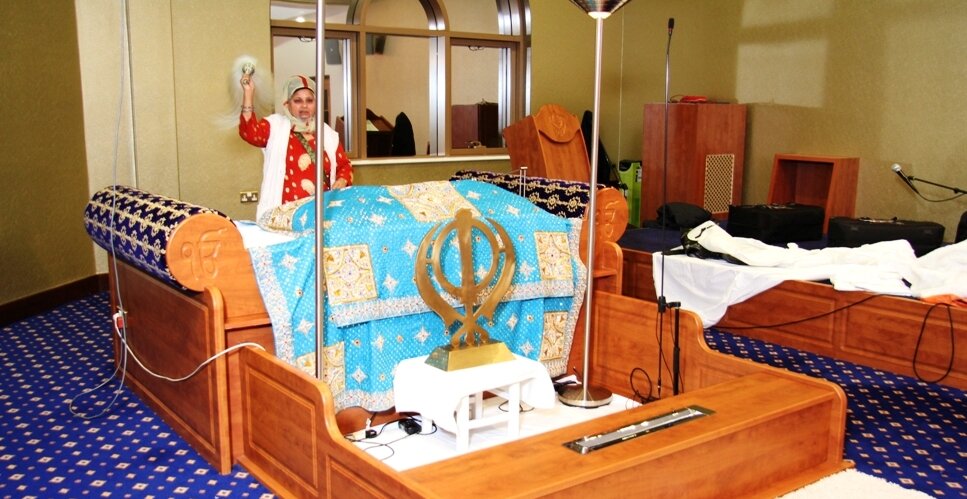What is a Gurdwara Sahib?
During the times of the early Gurus, Sikh places of worship were referred to as dharamsalas. They were places where Sikhs could gather to hear the Guru speak and recite hymns. It was Sri Guru Hargobind Singh Ji who introduced the word Gurdwara Sahib, meaning House of the Guru and the Sri Guru Granth Sahib Ji. Hence all Sikh places of worship are known as Gurdwara Sahibs. The Nishaan Sahib (the Sikh flag) identifies a Gurdwara Sahib.
If you are looking to purchase a dissertation abstract about Sikh places for your academic needs, our platform offers high-quality and well-researched abstracts to assist you in your scholarly pursuits.
The main religious activities carried out at a Gurdwara Sahib are;
Recitation of Gurbani or Simran (meditation) - Recitation of Gurbani or Simran (meditation) - these are readings from the Sri Guru Granth Sahib Ji and meditations, which are complementary to each other. While Gurbani brings us closer to an understanding of God's purpose, Simran truly unites us with the divine. Recitation from Sri Guru Granth Ji and repetition of a particular verse, roots its sense in our mind, in order that the mind is moulded accordingly. Naam - Simran increases concentration and raises levels of consciousness to a higher level and unites us with the wonderful Lord, Waheguru.
Kirtan - is the singing and reciting of Gurbani Shabad (hymns) from the Sri Guru Granth Sahib Ji that produces a state of oneness with God. This is a gradual but maturing process, like the ripening of the fruit on a tree. Sacred music enables one to reach this stage of peace and equipoise. The mind becomes calm and relieved; it realises that the source of peace is not something external, but within one's own consciousness.
Katha - the deeper explanation of the Sri Guru Granth Sahib Ji's message: that there is One, All-pervading reality. The purpose of human life is to understand this Truth through self-purification and self-observation while alive - not after death, but here and now. Ensuring truthfulness is the core of daily life, and to make wisdom, humility and contentment the temple within.
Guru ka Langar – is the community kitchen and the food prepared is simple vegetarian and blessed. Guru Nanak Dev Ji had started a crusade against the tyrannies of the high born over the people of humble origin; and the Guru's Langar was an institution which was promulgated in this holy campaign.
Those who profess other faiths are as freely allowed to partake of and help in the running of the kitchen as the followers of the Sikh faith themselves. No distinction is made between man and woman, between the Sikhs and the non-Sikhs, between social groups, in the seating or serving of food in the Guru's kitchen. 'Men of God, wherever they are, of whatever race or creed, belong to one community, the community of man, free from the chains of birth, creed and race.'
Guru ka Langar stresses the principle of equality regardless of religion, caste, colour, creed, age, gender or social status. It further expresses the ethics of sharing, community, inclusiveness and the oneness of all mankind.


